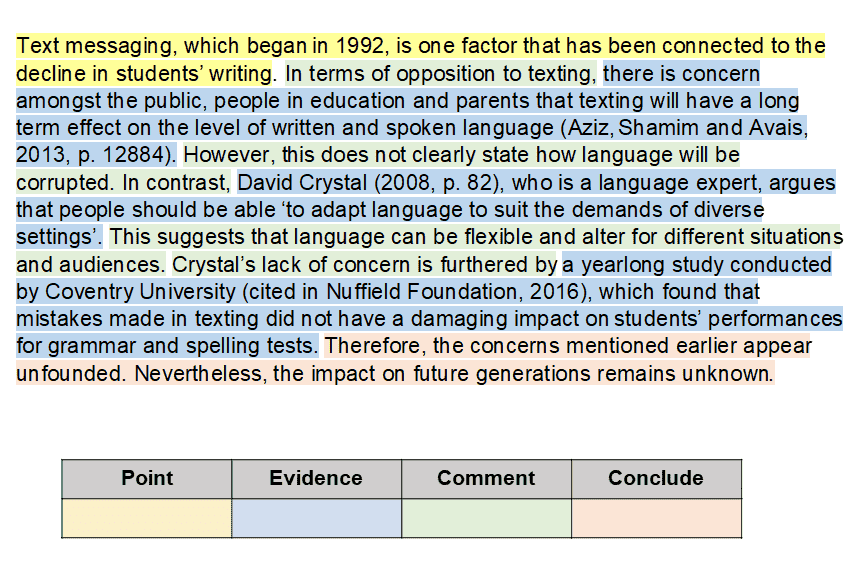Paragraphs
What is a paragraph?
- A paragraph is a sequence of sentences that cover one main idea or theme.
- Change paragraphs for a new topic, time period, place or person.
- There is no set length, but it should be more than a couple of sentences to develop your ideas fully.
- Watch the video below to learn more about the paragraph.
- There’s also a handy trifold guide about paragraphs below that summarises this page.
How is a paragraph structured?

1. Beginning: introduces
- Start with a topic sentence that outlines the point of the paragraph.
Example:
Another technique utilised for effect by van Gogh was impasto.
2 & 3. Middle: develops
- The point is supported through reliable evidence that is Harvard referenced.
- Evidence can be direct quotations (word for word), paraphrases (a source’s ideas restated into your own words), summaries (an overview of a whole source), examples or visuals.
- As well as showing others’ viewpoints, you need to comment on how you understand the evidence.
- See some examples of ways to comment in the PDF below.
4. End: completes
- Concluding sentences make a final point. Sometimes a transition is included to the next paragraph.
How might this structure look?
- The example paragraph highlights the elements of Point, Evidence, Comment and Conclude.
- Note how the reader is guided by using signpost words such as ‘however’, ‘in contrast’, ‘therefore’ and ‘nevertheless’. These words help to show the direction of your argument.

How can I move between paragraphs?
Create transitions between paragraphs with 4 techniques:
- Repeat a word or a phrase from the paragraph above.
- Pose a question generated from the paragraph before, and then answer it.
- Refer backwards, then point forwards e.g. Having discussed … the report will …
- Use signpost words and phrases mentioned above.
Paragraph checklist
| Paragraph Checklist Questions | Yes | No |
|---|---|---|
| Does the paragraph cover one main idea or theme? | ||
| Is the point relevant to your title or task? | ||
| Has reliable evidence (which is Harvard referenced) been provided? | ||
| Is there a balance between the evidence and your comments? | ||
| Has an overly short (one or two sentences) or long structure been avoided? | ||
| Do the paragraphs flow on from each other logically? |
Questions adapted from (Cooper & Shoolbred, 2016, p. 62)
Sources consulted
- Burns, T. and Sinfield, S. (2016) Essential study skills: the complete guide to success at University. 4th Edition. London: SAGE.
- Brunel University (2012) The power of the paragraph. Available at: https://vimeo.com/44666462 (Accessed: 29 November 2019).
- Cooper, H. and Shoolbred, M. (2016) Where’s your argument? Basingstoke: Palgrave Macmillan.
- Williams, K. (2014) Getting critical. 2nd Edition. Basingstoke: Palgrave Macmillan.
